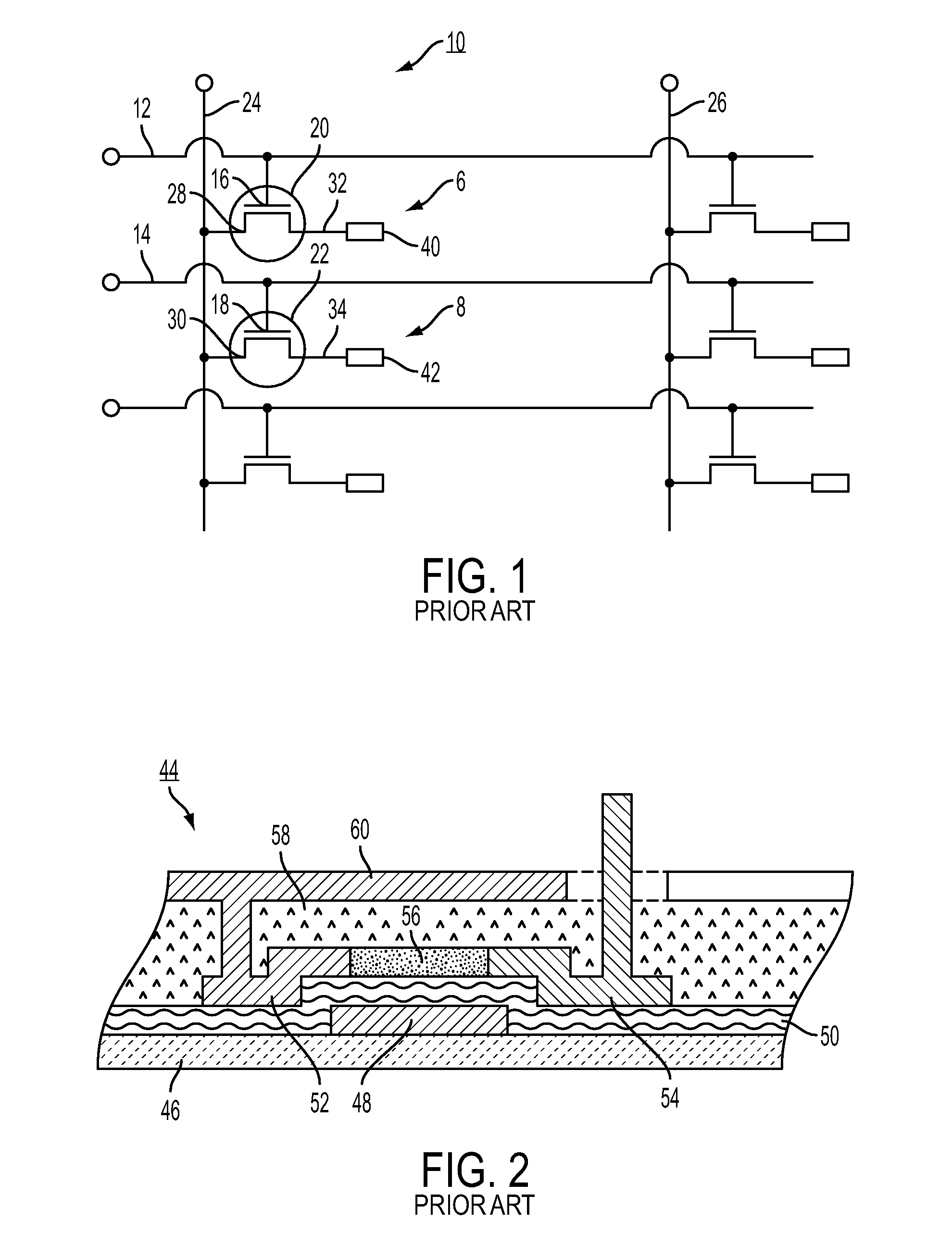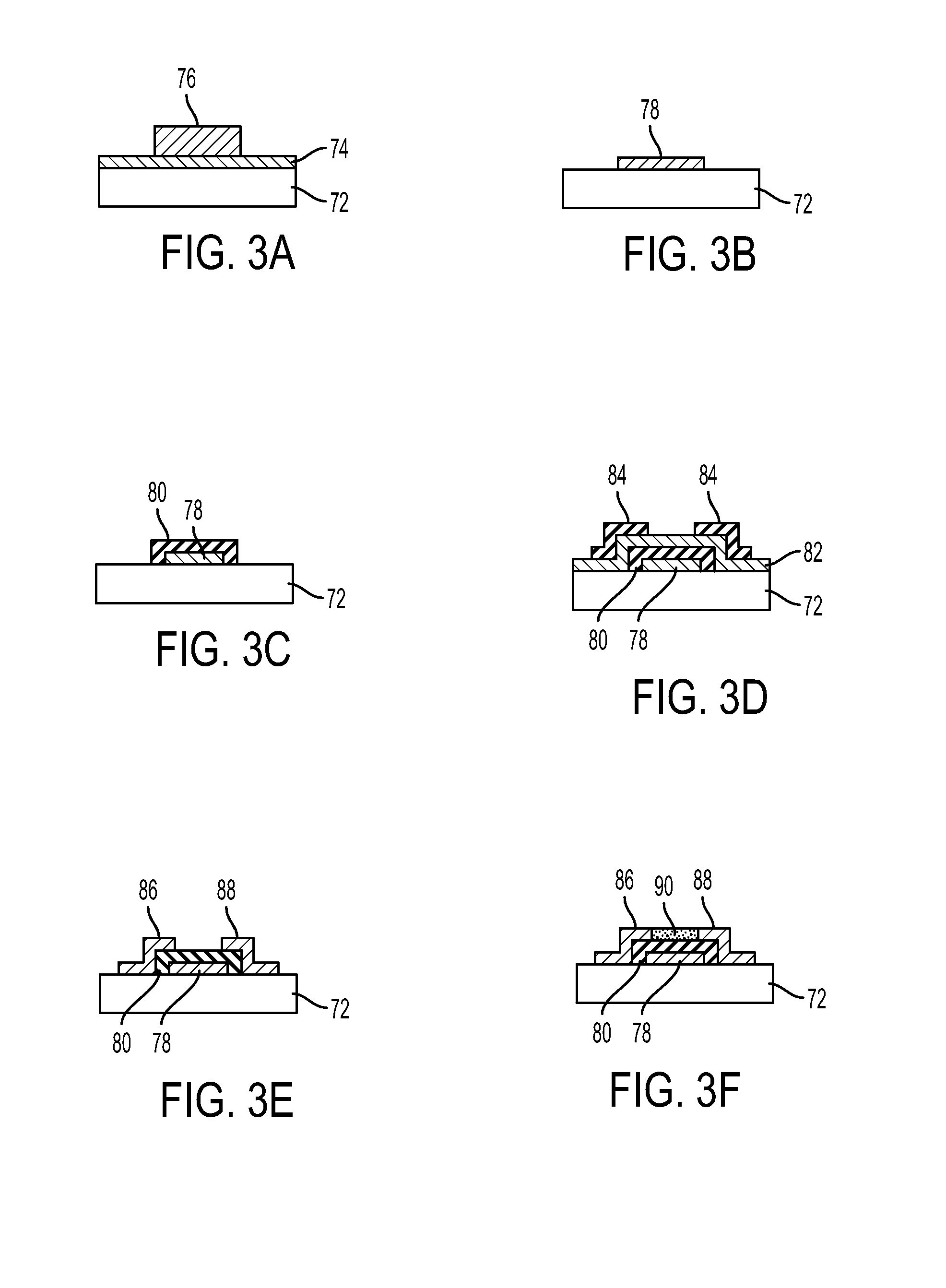Transistor Device Formed on a Flexible Substrate Including Anodized Gate Dielectric
a technology of anodized gate dielectric and flexible substrate, which is applied in the direction of semiconductor devices, basic electric elements, electrical equipment, etc., can solve the problems of deformation of the substrate, current limitations of using flexible substrates, and material from which the flexible substrates are formed cannot withstand typical high temperature deposition processes
- Summary
- Abstract
- Description
- Claims
- Application Information
AI Technical Summary
Benefits of technology
Problems solved by technology
Method used
Image
Examples
first embodiment
[0033]According to the present invention, illustrated in FIGS. 3a-3f, a TFT structure stack 70 is formed over a flexible substrate 72. Flexible substrate 72 may be a plastic film such as polyethylene naphthalate (PEN) polyethylene teraphlalate (PET), or a metal foil such as steel or even a thin glass sheet. Initially, a layer 74 of tantalum is deposited over substrate 72 by sputtering or thermal evaporation. Mask 76 is then formed over tantalum layer 74, for example by conventional photolithography or print patterning techniques such as those taught by Wong et al. in U.S. non-provisional patent application Ser. No. 11 / 193,847 (referred to as Wong et.), and the references cited therein (including U.S. Pat. Nos. 6,742,884 and 6,872,320), each of which being incorporated by reference herein. The structure is then etched, using mask 76 to protect a region of layer 74 thereunder, to thereby define a tantalum gate structure 78, as shown in FIG. 3b.
[0034]As an alternative to the process s...
second embodiment
[0046]Accordingly, pursuant to the present invention, a second dielectric layer is formed over the Ta2O5 dielectric layer of the prior embodiment. With reference to FIGS. 8a-8g, the process for forming such a structure is shown. With reference first to FIG. 8, a TFT structure stack 100 is formed over a flexible substrate 102. Flexible substrate 102 may be a plastic film or other material as discussed above. A layer 104 of tantalum is deposited over substrate 102. Mask 106 is then formed over tantalum layer 104, for example by a print patterning technique. The structure is then etched, using mask 106 to protect the region of layer 104 thereunder, to thereby define a tantalum gate structure 108, as shown in FIG. 9. The aforementioned aluminum / tantalum combination may also be employed in the present embodiment, if required.
[0047]With reference now to FIG. 10, the in-process structure is then anodized to form a dielectric layer 110 of Ta2O5 over tantalum gate structure 108. The thicknes...
third embodiment
[0060]In the description associated with FIGS. 14 through 16, it was assumed that the optional step of etching the continuous layers such that the layer coverage over the substrate was minimized was performed. Similarly, the step of etching the continuous layers such that the layer coverage over the substrate is minimized is also optional for this However, for the following description we will assume that this optional etching has not been performed, with it being understood that similar steps may be performed and results obtained with or without this optional etching.
[0061]With reference next to FIG. 25, source / drain electrode metal layer 150 is formed over layer 146, and source / drain masking structures 152 are formed over layer 150, again for example by conventional photolithography of print patterning techniques such as those taught by Wong et al. The source / drain metal may be Cr, TiW, Al or another convenient metal. The structure is then etched to remove portions of the source / ...
PUM
 Login to View More
Login to View More Abstract
Description
Claims
Application Information
 Login to View More
Login to View More - R&D
- Intellectual Property
- Life Sciences
- Materials
- Tech Scout
- Unparalleled Data Quality
- Higher Quality Content
- 60% Fewer Hallucinations
Browse by: Latest US Patents, China's latest patents, Technical Efficacy Thesaurus, Application Domain, Technology Topic, Popular Technical Reports.
© 2025 PatSnap. All rights reserved.Legal|Privacy policy|Modern Slavery Act Transparency Statement|Sitemap|About US| Contact US: help@patsnap.com



